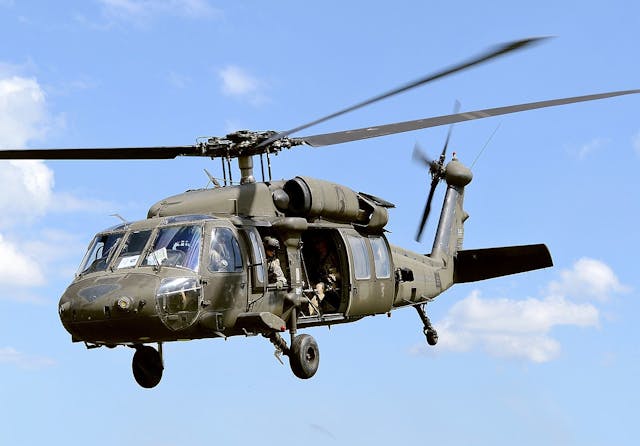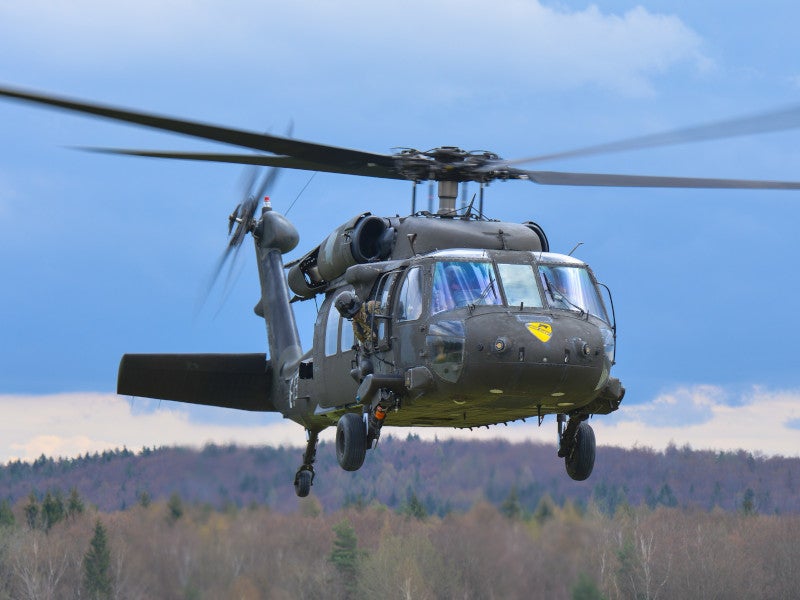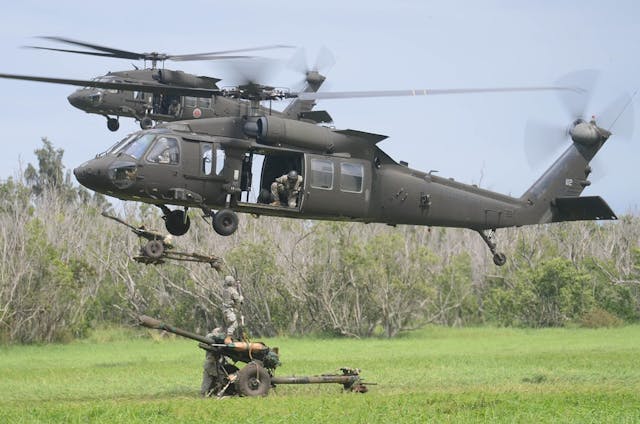Maintenance and Maintenance for UH 60 Helicopters
Maintenance and Maintenance for UH 60 Helicopters
Blog Article
Exploring the Cutting-edge Technology Behind Aircraft Layout and Engineering
The area of airplane layout and design is experiencing a transformative shift driven by innovative technologies that enhance performance, sustainability, and effectiveness. Advanced products such as carbon fiber composites and titanium alloys are establishing brand-new requirements, while aerodynamic technologies and expert system are streamlining processes and enhancing outcomes. As the market comes to grips with the challenges of environmental duty, growths in sustainable aeronautics technologies assure to improve the future. Nonetheless, the implications of these improvements extend past efficiency metrics; they may redefine the actual nature of air travel. What might this imply for the market overall?
Advanced Materials in Airplane Design
How can the assimilation of advanced materials change airplane layout? The incorporation of advanced products, such as carbon fiber compounds, titanium alloys, and advanced ceramics, plays a crucial role in enhancing airplane performance and effectiveness. These products provide superior strength-to-weight ratios, making it possible for producers to decrease general aircraft weight without jeopardizing structural honesty. This decrease in weight directly adds to enhanced gas performance and increased payload ability.
Additionally, advanced products exhibit enhanced resistance to corrosion and exhaustion, causing reduced upkeep expenses and extended life span. For example, using titanium in critical parts assists endure extreme temperatures and stresses, while carbon fiber composites provide flexibility in design and production processes. This versatility permits for even more wind resistant shapes, contributing to premium efficiency characteristics.
Moreover, the combination of wise materials, which can change homes in reaction to external stimulations, opens brand-new methods for adaptive systems in airplane design. uh 60. These innovations promise not only to enhance safety and security and functional efficiency but additionally to contribute to sustainability initiatives by lessening environmental influence with reduced exhausts. In summary, advanced products are redefining the landscape of aircraft layout, paving the means for much more efficient, long lasting, and eco pleasant aeronautics remedies
Wind Resistant Advancements for Efficiency
Wind resistant developments play a crucial function in boosting airplane efficiency, substantially influencing gas usage and total efficiency. Advancements in airfoil style, such as the intro of supercritical wings, permit enhanced lift-to-drag ratios, minimizing drag at transonic speeds. These technologies allow aircraft to preserve greater rates with lower fuel expense, directly impacting operational prices and environmental sustainability.
Additionally, the assimilation of winglets has actually proven efficient in mitigating vortex-induced drag at the ideas of wings, better improving gas efficiency - uh 60. This style modification results in a reduction in wake turbulence, contributing to enhanced wind resistant performance during cruise ship conditions

Furthermore, computational fluid dynamics (CFD) devices have actually changed the screening and refinement of aerodynamic forms, permitting for exact simulations of air flow around airplane (uh 60). This allows engineers to innovate constantly, guaranteeing that modern-day aircraft not just satisfy governing standards but also push the boundaries visit the website of efficiency in aviation

Role of Computer Simulations
Computer system simulations have actually ended up being a crucial tool in the area of aircraft layout, enabling engineers to conduct comprehensive analyses and optimizations of different design facets. These simulations permit the virtual testing of aerodynamic properties, architectural honesty, and efficiency metrics long prior to physical models are constructed. By employing computational liquid characteristics (CFD) and limited component evaluation (FEA), designers can anticipate exactly how air streams around the aircraft and just how different materials will react to stress and anxiety and pressure.
In addition, computer simulations help with the expedition of a wide variety of situations and variables, accelerating the style process and lowering costs connected with physical screening. This ability not only enhances the precision of forecasts relating to aircraft habits however likewise provides understandings into potential style improvements that could not be instantly apparent via conventional approaches.

In addition, simulations aid guarantee conformity with strict safety and security regulations by permitting designers to recognize and correct possible issues early in the layout phase. The integration of simulation modern technologies right into why not look here the aircraft layout process emphasizes the considerable advancements in design methods, ultimately adding to the development of much safer, more effective, and environmentally friendly airplane.
Expert System in Design
Expert system (AI) is revolutionizing the design landscape, specifically in aircraft design, by boosting decision-making procedures and enhancing layout operations. With artificial intelligence formulas, AI can assess huge datasets, discovering patterns and insights that educate style choices and boost article source total efficiency.
AI applications in aircraft design consist of generative style, where formulas produce multiple layout options based on defined specifications, allowing designers to evaluate a more comprehensive array of opportunities. This not only accelerates the style phase yet likewise ensures that the last products satisfy stringent efficiency and security standards.
Additionally, AI-driven predictive analytics assist in maintenance organizing by analyzing historic data and anticipating possible failures. This aggressive method lowers downtime and improves aircraft integrity.
Additionally, AI help in simulation and modeling, making it possible for engineers to check designs under different problems without the demand for physical prototypes. This capacity reduces development timelines and lessens costs related to typical testing methods.
Lasting Aeronautics Technologies
How can the aviation sector efficiently balance growth and ecological obligation? The response depends on the fostering of sustainable air travel innovations that focus on performance and reduce carbon discharges. Technologies such as lasting aviation fuels (SAFs), which are stemmed from sustainable sources, have actually arised as a critical component in accomplishing lower lifecycle emissions. SAFs can substantially reduce the carbon impact of trips, making them a viable alternative to conventional jet fuels.
Additionally, improvements in aircraft design, such as the development of lighter products and even more aerodynamically effective shapes, add to boosted gas effectiveness. Electric and hybrid propulsion systems are also obtaining traction, providing a pathway to reduce dependence on nonrenewable fuel sources and reduce greenhouse gas discharges.
The integration of these technologies is sustained by regulative frameworks and sector collaborations focused on setting ambitious sustainability targets. Electronic tools like information analytics and synthetic knowledge can maximize trip procedures, additionally improving gas effectiveness. By accepting sustainable methods and technologies, the air travel industry can not just meet the growing demand for flight yet additionally play an essential function in dealing with climate change, making sure a more sustainable future for air transport.
Conclusion
The convergence of sophisticated products, wind resistant technologies, and sophisticated technologies notes a significant development in aircraft style and engineering. The integration of carbon fiber composites, titanium alloys, and AI-driven processes not just enhances performance and effectiveness but also simplifies operations and predictive maintenance.

Computer system simulations have ended up being an indispensable device in the area of airplane design, allowing designers to perform comprehensive analyses and optimizations of numerous style elements.The convergence of advanced products, aerodynamic advancements, and sophisticated technologies marks a considerable development in airplane layout and design.
Report this page